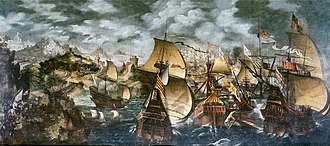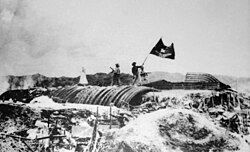
A military disaster is the defeat of one side in a battle or war which results in the complete failure of the losing side to achieve their objectives, often with a high and disproportionate loss of life. The causes are varied and include human error, inferior technology, logistical problems, underestimating the enemy, being outnumbered, and bad luck. [1] [2] [3] [4]
Contents
- Ancient era
- Medieval era
- 16th century
- 18th century
- 19th century
- 20th century
- First World War
- Second World War
- Cold War era
- See also
- References
- Works cited
- Further reading
Entries on this list are those where multiple sources dealing with the subject of military disasters have deemed the event in question to be a military disaster (or an equivalent term).





